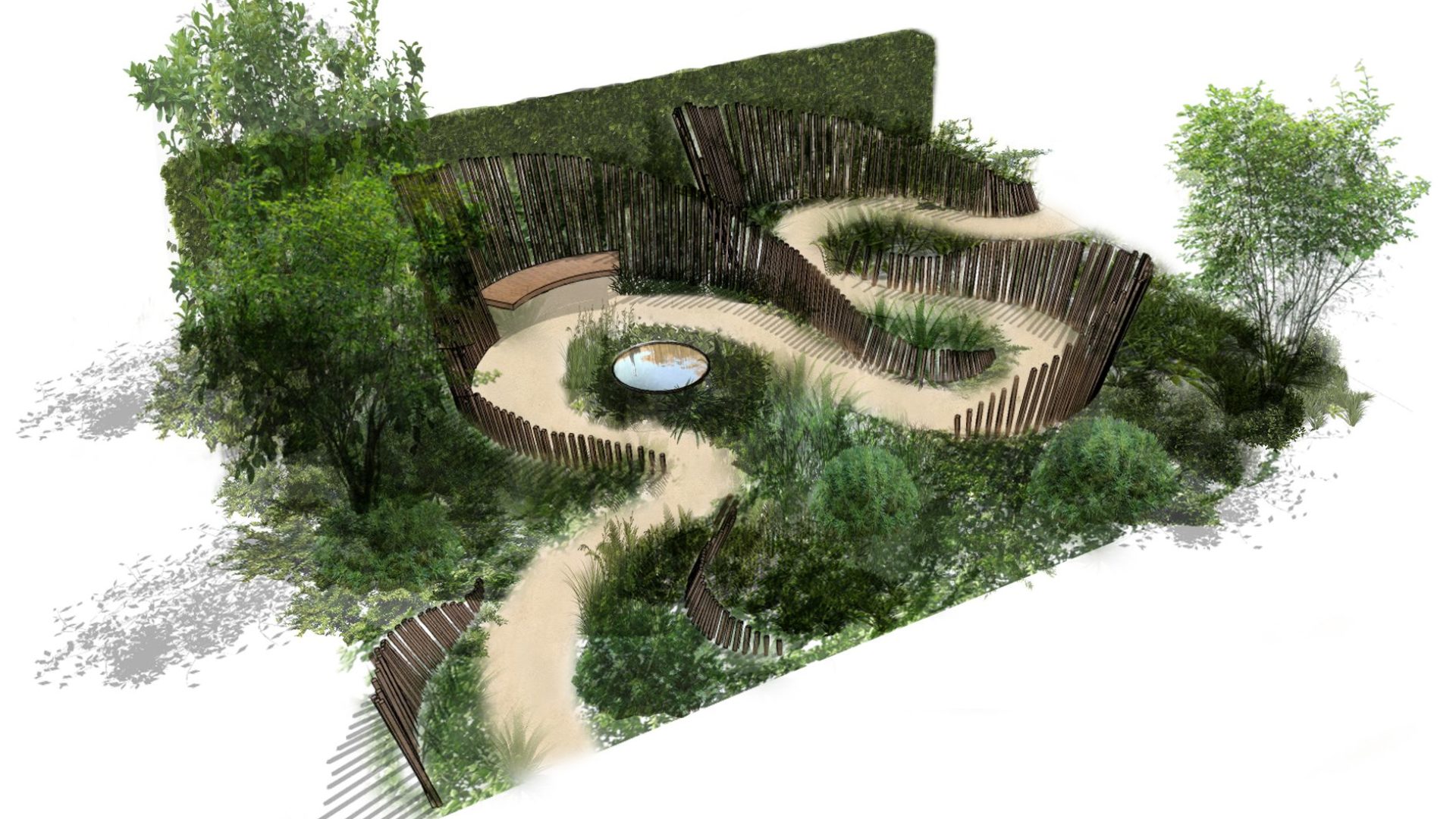The following is a blog from Max Harriman, one of the most recent (and talented!) additions to our design team at Bowles & Wyer. You can reach him on [email protected]. The garden is currently under construction and due to open next week – please visit!
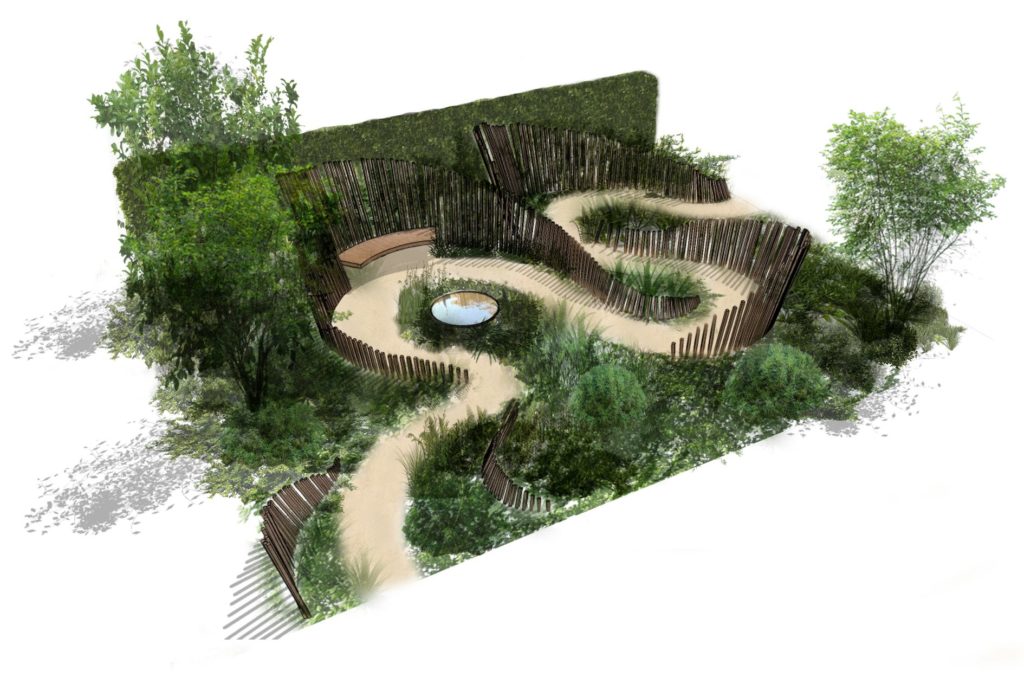
A hi-view perspective
‘Mental health’ is the buzzword of the moment, and for good reason. One in four people in the UK will suffer a diagnosable mental health problem each year [1]. Unsurprisingly, the prevalence of anxiety and depressive disorders increases by up to 20% for urban dwellers [2]. Urban life is stressful; increased social stresses, high population densities, disturbed chrono-biological rhythms and increased pollution are all major contributors. However, a surge of recent research has also pointed to the link between poor mental health and the lack of contact with the natural world or ‘Green Space’.
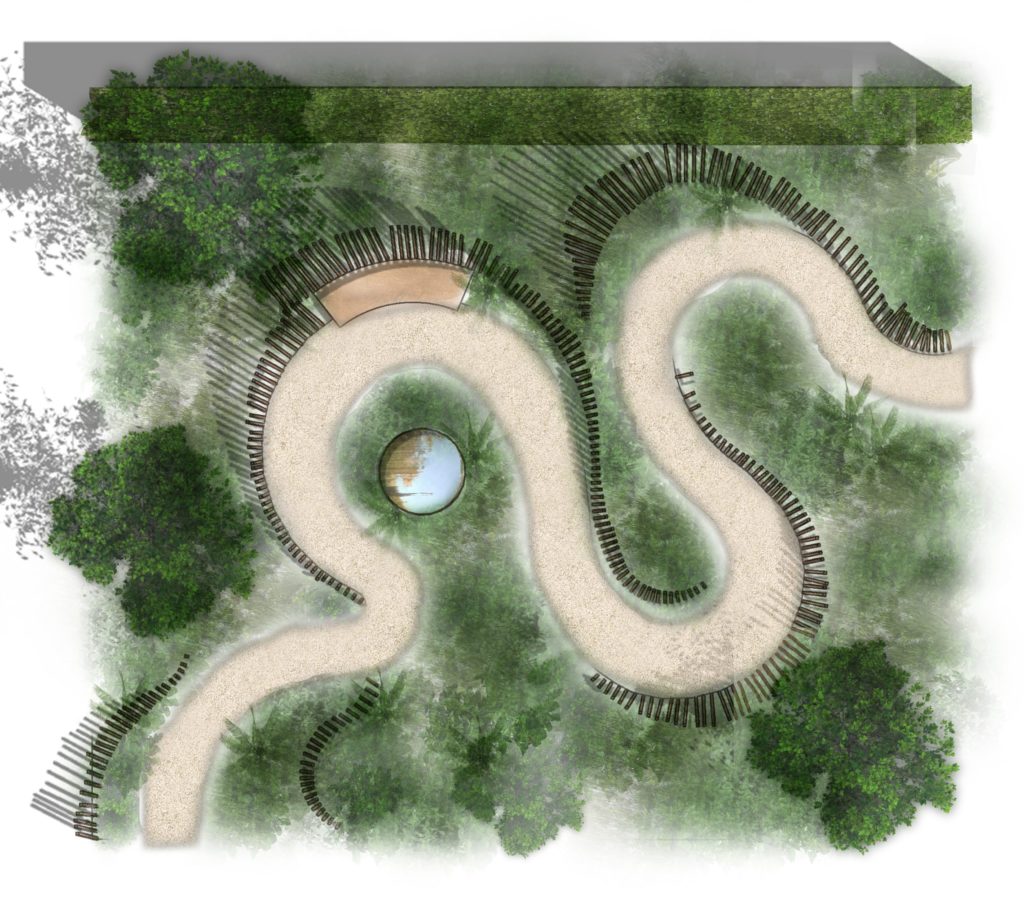
Plan of the Tatton garden
On 2nd July I, and a team from Bowles & Wyer, began the build of a show garden of my own design selected to compete in the Young Garden Designer of the Year competition. The competition, run by the RHS, allows the opportunity for aspiring designers just starting their careers, to exhibit a show garden for a chance to win the coveted title. This year’s theme for the competition was to design a garden that highlights the benefits plants and gardening have on health and wellbeing. I decided to focus primarily on mental health, designing a garden to maximise the restorative benefits green space has on our mental fitness, particularly for those of us living in the urban context.
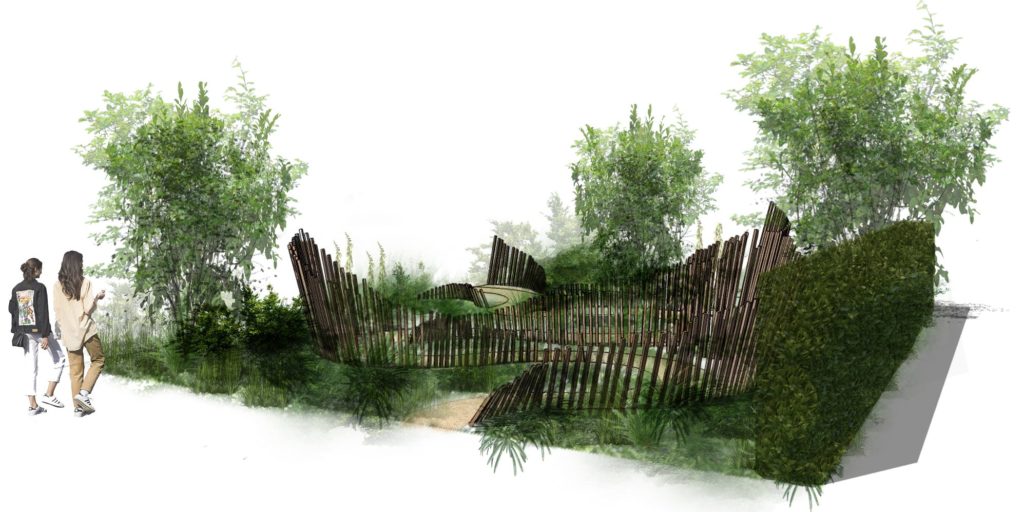
A perspective view of the Tatton garden from the front
My garden ‘Calm in Chaos’ was inspired by scientific literature surrounding the subject as well the realisation of the importance of green space in the urban environment having moved to London two years ago. The stresses of urban life are pacified when in the garden, transporting the guest far from the hustle and bustle to a woodland-like setting. Design elements aim to distract and absorb the guest, to take their mind off the associated stresses of city life. The garden is also designed to prolong the time the visitor spends in the space, therefore maximising the effects of the associated restorative benefits.
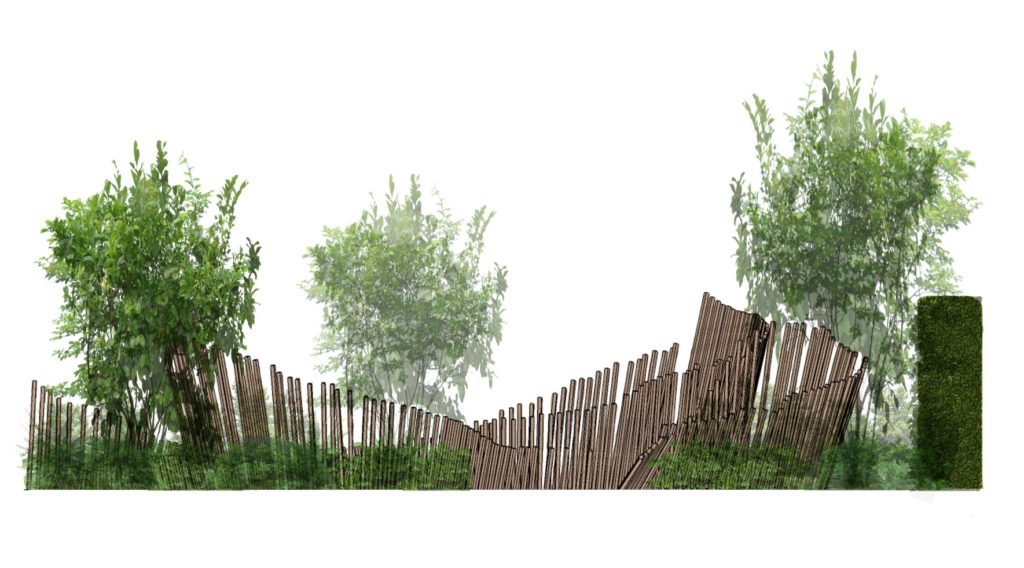
An elevation of the garden at Tatton from the front
I designed the garden around four main elements of the natural world that have been proven to have a positive impact on mental health in the urban environment [3]. The first is the feeling of ‘being away’ or removal from the city hardscape, which goes hand in hand with the second, the notion of scale or the feeling of extent in a space. Overthinking or rumination is a common symptom of mental health problems, so the third element is fascination or captivation to distract the guest’s attention away from the stresses of urban life, if only for a moment. Finally, the last intended element of the design was accessibility. I wanted the green space to be useable and inviting to encourage entry and therefore exploitation of the positive effects the garden would generate.
Escape
Gardens have the power to transport us to another place, which is the one of the main concepts behind ‘Calm in Chaos’. By using visual cues, for example planting style, the guest is psychologically removed from the urban setting. The feeling of escape on sight of the garden, and then once crossing its threshold, hypothetically would increase the uptake of restorative benefits. The path in the garden is made of compacted gravel to convey an ‘off the beaten track’ aesthetic far removed from the concrete and tarmac constant of urban life. The naturalistic woodland style of the planting is adopted to give the visitor the impression of being as far removed as possible from city life. A woodland planting palette was also chosen as walking through woodland has been proven to be an effective preventative health care measure: lowering blood pressure, reducing stress hormones and boosting the immune system.
Extent
Space in cities is scarce, and green spaces even more so, therefore ‘extent’ or an impression of scale was an important element of the garden to address. The winding path is essential to the design; snaking and meandering through the garden, it maximises the space and increases the sense of scale. The main feature of the garden is the series of timber posts that frame this winding path. The posts create a porous barrier through the space that only allows small glimpses through certain areas, adapting to the moving perspective of the guest as they walk along the path. The dynamic concealing and revealing of views in the garden is designed to give the impression of a larger expanse of space.
Distraction
Taking your mind off something is not always an easy task, especially for those who suffer from anxiety and depression. The natural world, however, is full of ‘soft fascinations’- things that can hold your attention in an effortless fashion such as waves hitting a beach or rustling leaves. Therefore, ‘distracting’ elements were a significant consideration whilst designing the garden. Planting in the garden was designed to include a multitude of leaf forms, shapes and textures (much like a natural woodland) to visually stimulate guests. Increased fascination distracts guests from their urban stresses, makes them pause, slow down and ultimately increase the time spent in the garden. The posts, obscuring views whilst opening up new ones, are designed to entice and captivate visitors. The calming effects of water are also well documented, increasing creativity as well as possessing restorative qualities of its own. Water evokes a child-like fascination in all of us and people are generally attracted to it, so I have placed a reflective water dish central to the garden.
Accessibility
Compatibility of urban green spaces and its intended use is important. I often notice public green spaces that are not only unimaginative and repetitive, but also seem not to encourage exploration or spending time long enough to achieve any associated benefits. Sure, it can look great – but can you use it? Do you want to use it? The path in ‘Calm in Chaos’ plays an integral role in inviting the visitor into the garden, with the water bowl and bench providing an enticing destination point. This is the best place to enjoy the garden. It encourages entry into the space and will ultimately be the place where guests stop, sit down, whilst immersed in greenery and soak up the restorative effects of the design.
Research has shown that those living in urban areas close to green spaces are significantly less likely to suffer poor mental health [4]. Interaction with nature and the integration of green spaces into our busy modern lives will undoubtedly become increasingly important in reducing the prevalence of mental health issues – a daunting but very exciting prospect!
‘Calm in Chaos’ will be exhibited at the RHS Tatton Park Flower show from the 18th-22nd of July. More notably the show garden will be relocated and transformed into a permanent feature garden at Addenbrooke’s Hospital, Cambridge after the show to be used and enjoyed by patients and friends and families of patients alike.
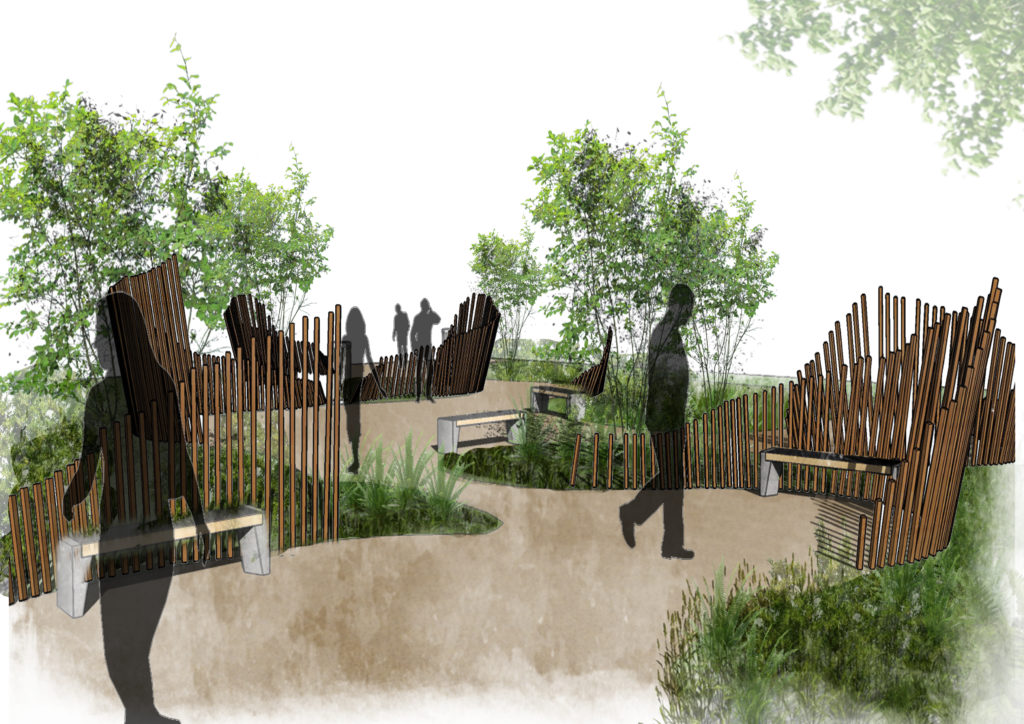
How the garden will look once it is installed at Addenbrookes Hospital
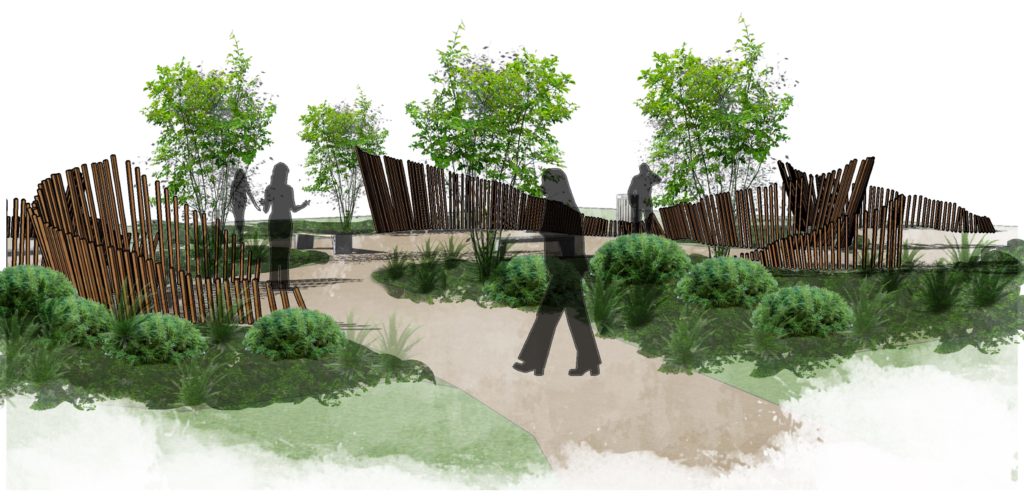
How the garden will look once it is installed at Addenbrookes Hospital
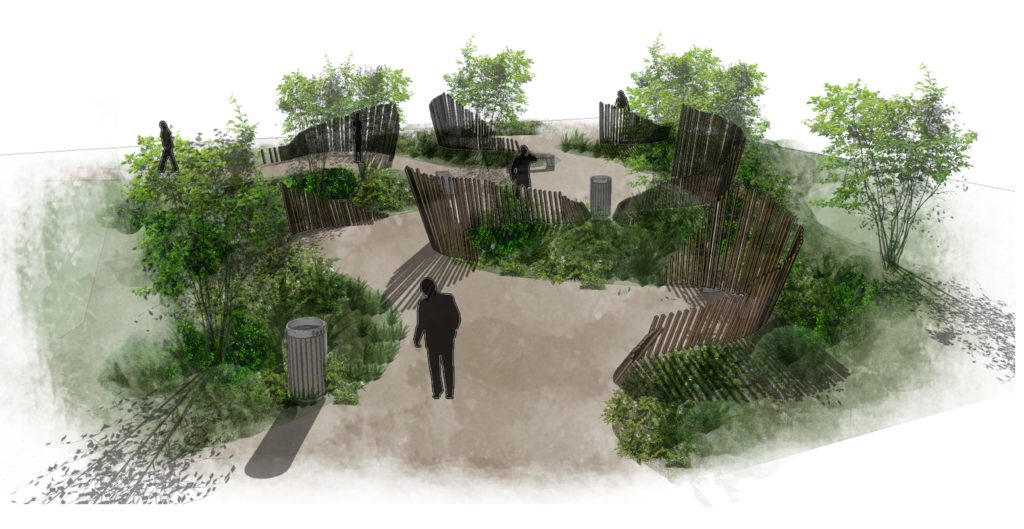
How the garden will look once it is installed at Addenbrookes Hospital
Elements of ‘Calm in Chaos’ were kindly sponsored by Groundwork UK and UBS Wealth Management. I would also like to thank the following supporters of the garden.
- London Stone
- Crowders Nursery
- AllGreen
- The Pot Company
- Hedges Direct
References:
1] McManus et al. (2007) Adult psychiatric morbidity in England: 2007 results of a household survey [online] Available at: https://digital.nhs.uk/data-and-information/publications/statistical/adult-psychiatric-morbidity-survey/adult-psychiatric-morbidity-in-england-2007-results-of-a-household-survey [Accessed 17.06.18]
2] Peen et al. (2010) The current status of urban – rural differences in psychiatric disorders. Acta. Pyschiatric. Scand. 121(2) 84-93
3] Kaplan S. (1995) The restorative benefits of nature: towards an integrative framework. Journal of Environmental Psychology 15 169-182
4] Richardson et al. (2013) Role of Physical activity in the relationship between urban green space and health. Public Health 127:4 318-324

